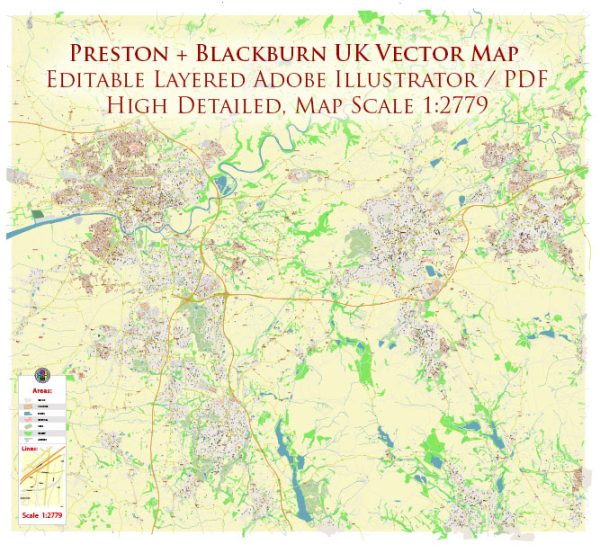Both Preston and Blackburn, located in Lancashire, England, have rich histories of urban development that span several centuries. While each town has its unique story, some general aspects of their urban development can be highlighted.
Preston:
- Medieval Origins: Preston has medieval origins, with evidence of a settlement dating back to the Roman period. It was granted a Guild Merchant charter in 1179, which played a crucial role in shaping its economic and social structure.
- Industrial Revolution: Like many towns in the North of England, Preston experienced significant growth during the Industrial Revolution. The textile industry, particularly cotton, played a pivotal role in shaping the town’s economic landscape.
- Transportation: The development of transportation links, including the Lancaster Canal and later the railway, further facilitated industrial and commercial growth. Preston became a key center for cotton spinning and weaving.
- Victorian Architecture: The Victorian era left its mark on Preston, with many buildings constructed in the architectural style of the time. The town hall, for instance, is a notable example of Victorian architecture.
- Post-War Development: Like many industrial towns, Preston faced challenges in the post-war period with the decline of traditional industries. Urban redevelopment projects were initiated to address issues such as slum housing and outdated infrastructure.
- Modern Era: In more recent times, Preston has undergone various regeneration projects to modernize the town center and attract businesses. The University of Central Lancashire (UCLan) has also played a significant role in shaping the town’s character.
Blackburn:
- Textile Industry: Similar to Preston, Blackburn’s history is closely tied to the textile industry. Cotton weaving and spinning were central to its economy during the Industrial Revolution.
- Railway Development: The advent of the railway in the 19th century further boosted Blackburn’s industrial and economic growth by improving transportation links.
- Cathedrals and Architecture: Blackburn is home to Blackburn Cathedral, a significant architectural and religious landmark. The town features a mix of Victorian and more modern architecture, reflecting its historical development.
- Post-Industrial Challenges: As with many industrial towns, Blackburn faced challenges in the post-industrial era, including the decline of traditional industries. Efforts were made to diversify the local economy and rejuvenate the town.
- Cultural and Educational Developments: The creation of cultural and educational institutions, including Blackburn College, has contributed to the town’s cultural and intellectual vibrancy.
- Regeneration Projects: Ongoing regeneration projects aim to revitalize the town center and improve infrastructure, making Blackburn a more attractive place to live and do business.
In summary, both Preston and Blackburn have histories deeply rooted in the Industrial Revolution, with textile industries shaping their early development. The challenges of post-industrialization have led to concerted efforts to regenerate and modernize these towns, creating a blend of historical charm and contemporary amenities.


 Author: Kirill Shrayber, Ph.D.
Author: Kirill Shrayber, Ph.D.